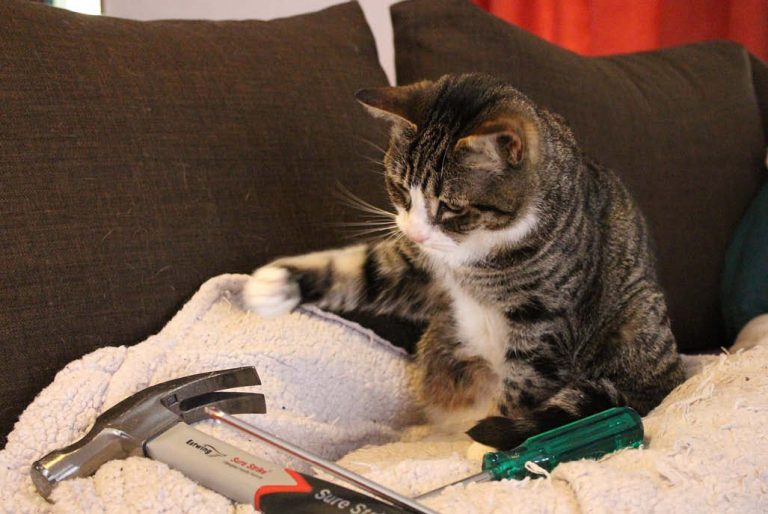Planning renovations? It’s worth it in the end, but the process can be stressful for people and pets. With a little planning, you can ease the stress and keep your cat safe.
Pets need to be kept away from work areas for their safety and the safety of workers. If the planned work is extensive or your pet is very sensitive, it’s worth boarding them during construction; you’ll have peace of mind knowing they won’t be exposed to anything dangerous and won’t get frightened and run away.
Make sure your cat’s microchip, registration details and vaccinations are up to date. If your cat is staying home with you, set them up in a separate room with everything they need: litter tray, food and water, toys, and their favorite bedding. Choose a room as far as possible from the construction zone, that workers do not need to access, and put a big “Do Not Open” sign on the door. Make sure windows and flyscreens are secured so your cat can’t escape.
Including a high perch and an igloo bed or box that they can retreat to will help them to feel secure, and calming interventions such as Feliway, Zylkene and Tranquil Treats can help too. Cats are creatures of habit, so maintaining their normal feeding, playtime and sleep routines will reassure them.
Small particles of dust and debris from renovation work can easily attach to your cat’s coat, their bedding and get into their lungs and eyes. This can cause difficulty breathing, asthma, eye irritations, skin allergies and/or toxicity if they ingest chemicals or foreign materials. Keep their room scrupulously clean and monitor their health closely.
Many older homes have lead paint and asbestos, which are extremely dangerous for people and for pets, so consult professionals before embarking on any DIY.
Cats are more sensitive to fumes than we are, so don’t assume that because you don’t notice an odour your cat is safe. Even if your cat is mostly staying home during renovations, you should consider boarding them during dangerous, noisy, or fume-emitting jobs.
Document all the products used (safety data is usually printed on the packaging; take photos to record all the paints and chemicals used for your renovations). If your pet somehow ingests something, the product information will help your vet to determine the best treatment.
While you’re renovating, consider including some special “feline features” to your home, such as indoor catwalks and a “catio”. Once the renovations are done, thoroughly clean your home and remove all potential hazards. If you’ve made big changes, gradually introduce your cat back into the home: things will look and smell different to them, so make sure there are some blankets and toys that have your cat’s scent on them. This will reassure them that they are indeed “home”. Best of luck!
For more information on Keeping your cat safe while renovating see Cat Protection Society’s factsheet or visit their website www.catprotection.org.au For general advice on cat care and everything feline, call the Cat Protection Society of NSW on 02 9557 4818.




